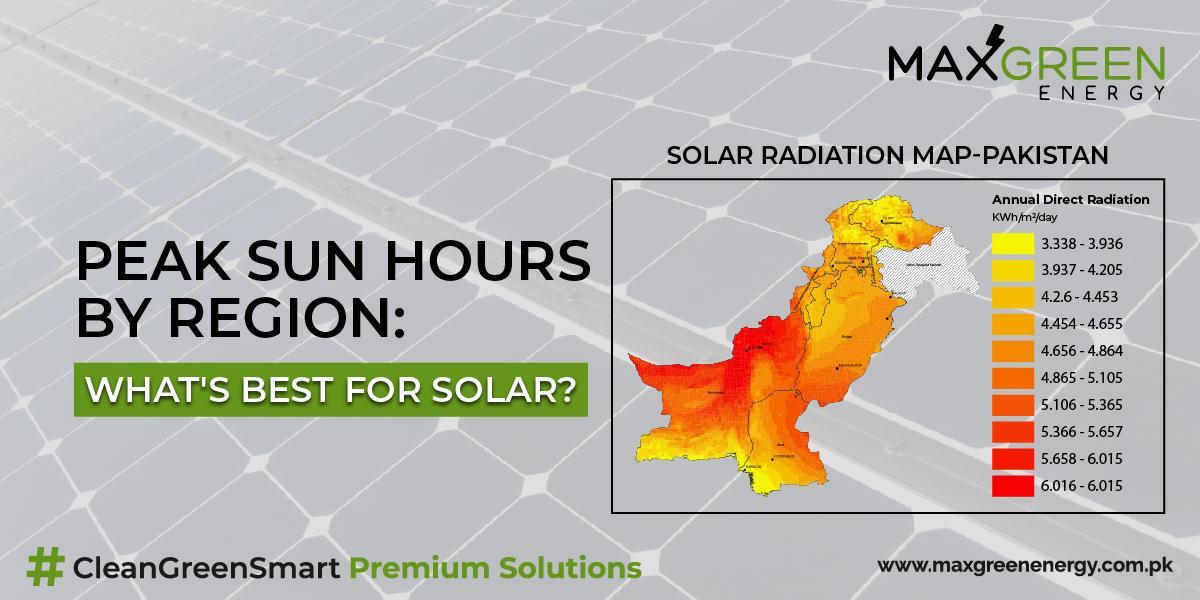What are Peak Sun Hours?
A solar energy production estimate is done by using the variable Peak Sun-Hour (PSH) times the power of the solar photovoltaic system in watts. Peak sun hours are not the same as “hours of sunlight” which is the total hours from sunrise to sunset. Instead, peak sun hours are the average solar radiation a certain location receives throughout the day. Its unit is kWh/m² per day.
A peak sun hour is defined as an hour in the day when the intensity of the sunlight reaches an average of 1000 watts/meter². For example, a location that gets 5 PSH (kWh/m²), means that area gets 5 hours of solar power when the average intensity of sunlight is 1000 watts/meter².
Now let’s do an example of energy calculation of a solar photovoltaic system using the peak sun hours. Say we have a 5kW solar photovoltaic system in Karachi which gets 3.6 peak sun hours as an annual average. Knowing the system wattage and peak sun hours we can find out how much energy the system will produce annually:
Daily Energy: 5 kW x 3.6 hours (PSH) = 18 kWh
Annual Energy: 25 kWh x 365 days = 6570 kWh
*For simplicity, these numbers don’t represent any real world degradations, losses and inefficiencies.
Electric utility companies’ bill their customers using Kilowatt-Hour (kWh) as a standard unit of energy. We also get a kWh number for the system by multiplying peak sun hours with the solar system size. This way you can easily calculate your solar offset from your total annual electric utility usage in kWh.
Peak sun hours can vary depending on region and exposure to the sun. MaxGreen experts know that in Sindh, the average peak sun hours value averages from 3.4 to 5.2. Throughout the year peak sun hour values change depending on the tilt of the solar modules. A system tilted at 35 degrees in Karachi will have an average 2.8 PSH in August (the lowest), in May the average will go to 4.4 (the highest). Going up and down throughout the year, Karachi’s peak sun hour PSH average is 3.6 annually. Hyderabad’s average is a bit higher at 3.9 peak sun hours (PSH) annually and so on.
Peak sun hour values also depend on solar modules angles in relation to the sun. For example, a south facing roof pitched at a 50 degree angle in Karachi gets 3.2 PSH annual average compared to 3.9 PSH average for a 35 degree tilt.
MaxGreen experts can help you get the best solar placement on your home to take advantage of peak sun hours. Are you interested in going solar, or improving your current solar panels to take advantage of peak sun hours? Feel free to contact us today to get an estimate for your own solar-panel system installed on your roof-top.

